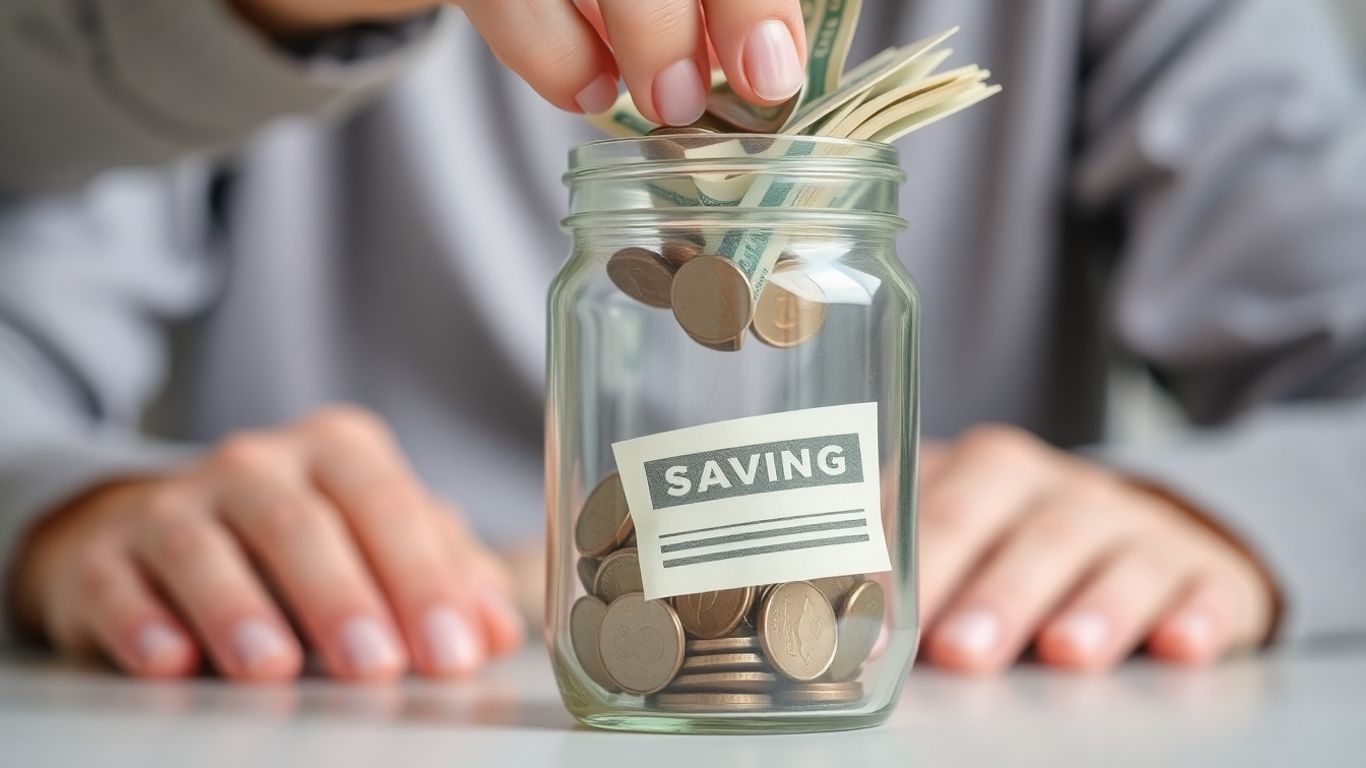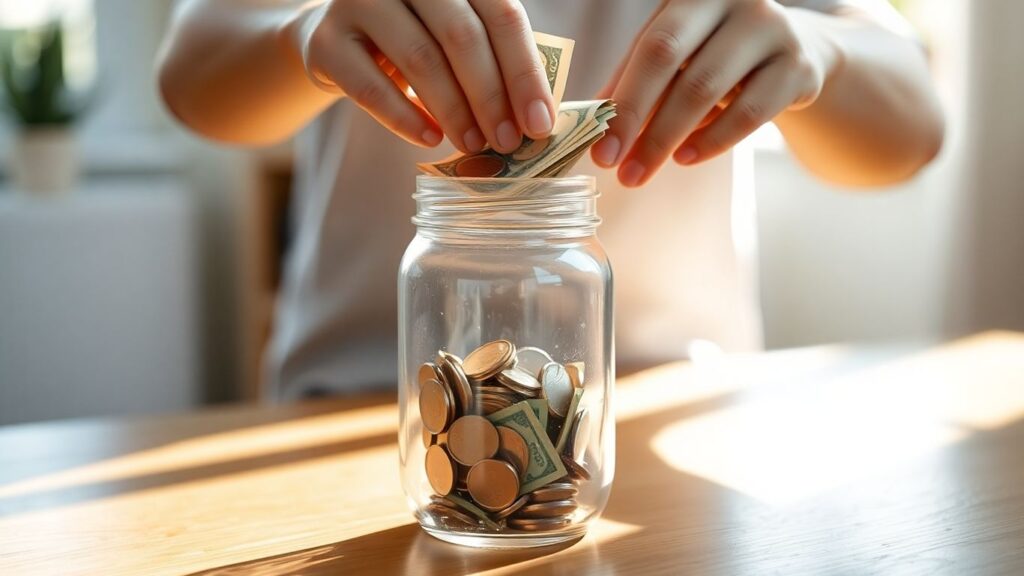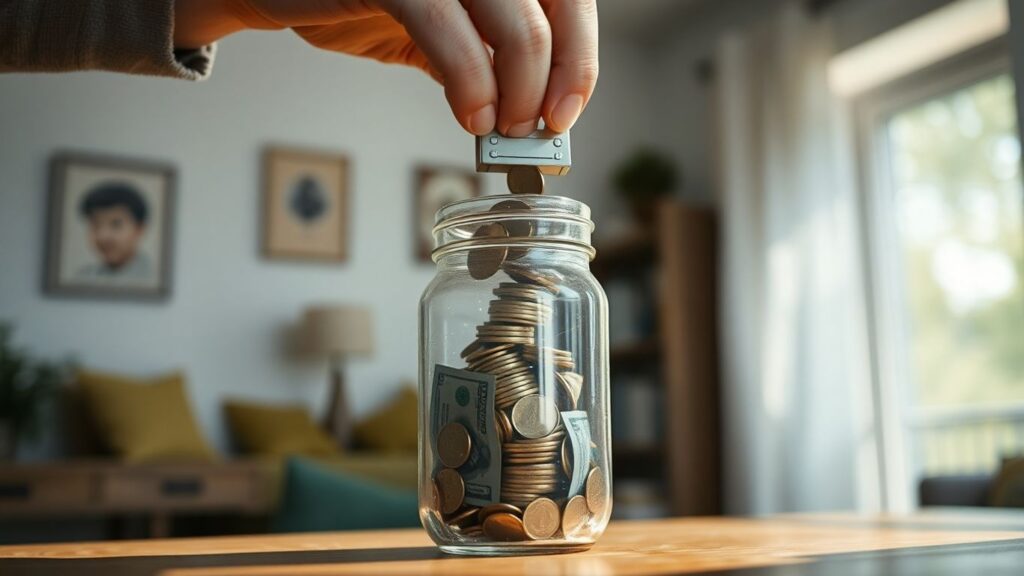
Life throws curveballs, right? One minute things are fine, the next your car needs a major repair or you get hit with an unexpected medical bill. These surprises can really mess with your Personal Finance plans. That’s where an emergency fund comes in. It’s basically a safety net, a stash of cash set aside just for those ‘oh no!’ moments, so you can handle them without going into debt or derailing your other financial goals. Let’s figure out how to build one that actually works for you.
Key Takeaways
- An emergency fund is money specifically saved for unexpected costs like job loss, medical bills, or car repairs, helping you avoid debt.
- Figure out your target savings amount by looking at your regular expenses and past unexpected costs.
- Build your fund by saving consistently, using windfalls like tax refunds, and managing your money flow better.
- Make saving easy by setting up automatic transfers from your checking to a separate savings account.
- Keep your emergency money in a safe, accessible place like a savings account, but be ready to replenish it after you use it.
Understanding Your Emergency Fund

What Constitutes an Emergency Fund?
So, what exactly is an emergency fund? Think of it as your personal financial safety net. It’s a stash of money specifically set aside for those unexpected moments when life throws a curveball. We’re talking about things like a sudden car repair that stops you from getting to work, a leaky roof that needs immediate attention, or a surprise medical bill that pops up out of nowhere. It’s not for your planned vacations or that new gadget you’ve been eyeing. This fund is strictly for true, unplanned expenses that would otherwise derail your budget or force you to go into debt.
Why Prioritize Emergency Savings?
Life happens, right? One minute you’re cruising along, and the next, your washing machine decides to quit on you. Without an emergency fund, these kinds of events can quickly turn into a big problem. You might end up swiping a credit card, racking up interest, or worse, dipping into money you’ve saved for other important goals, like retirement. Having this dedicated savings means you can handle these bumps without creating bigger financial headaches down the road. It gives you peace of mind, knowing you’ve got a cushion to fall back on.
Assessing Your Personal Finance Needs
Before you start stuffing money into a piggy bank (or, you know, a savings account), you need to figure out what your personal needs are. How much do you really need to have stashed away? It’s not a one-size-fits-all number. You’ll want to think about a few things:
- Your typical monthly expenses: What does it cost you to live each month? Rent or mortgage, utilities, food, transportation, insurance – the whole shebang.
- Your income stability: Do you have a steady paycheck every two weeks, or is your income more unpredictable, like if you’re self-employed or work on commission?
- Past unexpected costs: Have you had major car repairs recently? Any surprise medical bills? Thinking about what has blindsided you financially in the past can give you a good idea of what might happen again.
Figuring out your personal needs is the first step to building a fund that actually works for you, not just some generic advice you read online. It’s about tailoring it to your life.
Determining Your Emergency Fund Goal
Okay, so you know you need an emergency fund, but how much should you actually aim for? This isn’t a one-size-fits-all number, and figuring out your personal target is a pretty important step. It’s about setting a realistic goal that makes sense for your life, not just what some article says you should have.
Calculating Your Target Savings Amount
This is where we get down to brass tacks. The most common advice is to aim for three to six months of essential living expenses. Think about what you absolutely need to spend each month to keep a roof over your head, food on the table, and utilities running. Don’t include your daily latte habit or that streaming service you barely watch. We’re talking bare bones.
Here’s a simple way to break it down:
- List your essential monthly expenses: Rent/mortgage, utilities (electricity, gas, water), groceries, transportation (gas, public transport), insurance premiums, minimum debt payments.
- Add them up: Get a total for your absolute minimum monthly spending.
- Multiply by your desired range: If you’re aiming for 3 months, multiply that total by 3. If you’re going for 6 months, multiply by 6. This gives you your target range.
For example, if your essential monthly expenses come to $2,500, your target could be anywhere from $7,500 (3 months) to $15,000 (6 months).
Considering Your Income Stability
Now, think about your job and how steady your income really is. If you have a super stable job with a company that’s been around forever and your paychecks are always the same amount, you might lean towards the lower end of that 3-6 month range. It’s less likely you’ll suddenly lose your income.
But, if you’re self-employed, work on commission, or are in an industry that’s a bit more unpredictable, you’ll want to aim for the higher end, maybe even more than six months. The more your income fluctuates, the larger your safety net needs to be. It’s better to have a bit too much saved than not enough when things get tough.
Factoring in Past Unexpected Expenses
What kind of curveballs has life thrown at you recently? Think back over the last year or two. Did your car suddenly need a major repair? Did you have an unexpected medical bill? Did a home appliance break down? Jot down these events and how much they cost you out-of-pocket.
Looking at your past expenses can give you a realistic idea of what kind of emergencies you’re most likely to face. It helps you tailor your savings goal beyond just a general number of months. If you’ve had a history of costly car repairs, for instance, you might want to ensure your fund can cover at least one or two of those without breaking a sweat.
This isn’t about dwelling on the past, but using that information to build a fund that’s truly prepared for your potential future hiccups. It makes the whole process feel a lot more personal and less like just following a generic rule.
Strategies for Building Your Fund
Alright, so you know why you need an emergency fund and how much you’re aiming for. Now comes the part where we actually get the money into that account. It’s not always easy, especially if money is tight, but there are definitely ways to make it happen. Think of it like building any habit – it takes a little effort at first, but then it becomes second nature.
Establishing a Consistent Savings Habit
This is probably the most straightforward, yet sometimes the hardest, part. You need to get into the rhythm of putting money aside regularly. It doesn’t have to be a huge amount each time. Even small, consistent contributions add up faster than you might think. The key is regularity. If you’re not used to saving, start small. Maybe it’s just $10 or $20 a week. The goal is to make it a non-negotiable part of your budget, just like paying your rent or buying groceries.
- Set a clear, achievable goal: Knowing exactly what you’re saving for (your emergency fund!) keeps you motivated.
- Create a system: Decide how you’ll save. Will it be every payday? Once a week? Find what works for you.
- Track your progress: Seeing that balance grow is a huge motivator. Check it regularly, maybe once a month.
- Celebrate small wins: Hit a $100 milestone? Treat yourself to a coffee. Acknowledge your effort!
Building a savings habit is like training for a marathon. You don’t start by running 26 miles. You start with short distances and gradually increase your capacity. The same applies to saving money. Consistency over intensity is the name of the game.
Leveraging One-Time Financial Windfalls
Life throws us curveballs, but sometimes those curveballs come with a silver lining. Think about those unexpected checks that land in your lap – a tax refund, a birthday gift from a relative, a bonus at work, or even selling something you no longer need. It’s super tempting to blow that extra cash on something fun, and hey, a little treat is fine. But if you can resist the urge and put a good chunk, or even all of it, into your emergency fund, you’ll see your savings jump significantly. This is a fantastic way to give your fund a big boost without drastically changing your regular budget. For instance, if you get a $1,000 tax refund, putting $700 of it into savings can get you much closer to your goal, much faster. You can find more tips for saving during tax time on various financial sites.
Managing Your Cash Flow Effectively
This one is all about understanding where your money is going and when. Cash flow is just the movement of money in and out of your bank account. If you’re constantly feeling like you’re short on cash before your next paycheck, it’s likely an issue with your cash flow. By tracking your income and expenses, you can spot patterns. Maybe you notice you spend a lot on impulse buys mid-week, or perhaps you could shift bill due dates around to align better with your paydays. Sometimes, it’s as simple as identifying areas where you can cut back slightly, even temporarily, to free up cash for savings. It’s about making your money work for you, not against you.
Here’s a quick look at how to manage cash flow:
- Track everything: Use an app, a spreadsheet, or a notebook. Know what’s coming in and what’s going out.
- Budget realistically: Create a spending plan that accounts for needs, wants, and savings.
- Adjust spending: Identify non-essential expenses that can be reduced or eliminated.
- Negotiate bills: See if you can get better rates or adjust payment schedules with service providers.
| Income Source | Amount | Frequency |
|---|---|---|
| Salary | $3,000 | Monthly |
| Freelance | $500 | Variable |
| Expense Category | Amount | Frequency |
|---|---|---|
| Rent | $1,200 | Monthly |
| Groceries | $400 | Monthly |
| Utilities | $150 | Monthly |
| Transportation | $200 | Monthly |
| Entertainment | $100 | Monthly |
Automating Your Savings Process
Look, life happens. Unexpected bills pop up, cars break down, and sometimes you just need a little breathing room. Building an emergency fund is smart, but actually keeping it funded can feel like a chore. That’s where automation comes in. Making your savings automatic is one of the easiest ways to ensure your fund actually grows. It takes the willpower out of the equation, turning a potentially tedious task into a background process.
Setting Up Automatic Bank Transfers
This is probably the most common method, and for good reason. You tell your bank to move a set amount of money from your checking account to your savings account on a regular schedule. You can pick the amount and how often – weekly, bi-weekly, monthly. It’s like setting up a recurring bill payment, but instead of paying someone else, you’re paying yourself. Just make sure you have enough in your checking account when the transfer is scheduled, or you might end up with overdraft fees. Nobody wants that.
Here’s a simple way to think about it:
- Decide on a transfer amount: Start small if you need to. Even $25 a week adds up.
- Choose a transfer frequency: Align it with your payday if possible.
- Set up the recurring transfer: Most bank apps or websites make this pretty straightforward.
- Monitor your checking account balance: A quick check before your payday can prevent surprises.
Utilizing Employer Payroll Deductions
Another neat trick is to have your employer split your direct deposit. Instead of your entire paycheck going into one checking account, you can arrange for a portion to go directly into your savings account. This is especially helpful if you find yourself tempted to spend money as soon as it hits your account. It’s a way to pay yourself first before the money even has a chance to tempt you. Check with your HR department to see if this is an option at your workplace. It’s a great way to safeguard your finances without much thought.
Managing Your Cash Flow Effectively
While automation is great, it works best when you have a handle on your money coming in and going out. Understanding your cash flow means knowing when your bills are due and when your income arrives. Sometimes, you can even adjust bill due dates with creditors to better align with your paychecks. This way, you can free up extra cash in certain weeks to move into savings, or at least avoid shortfalls that might interfere with your automatic transfers. It’s about making your money work for you, not against you.
Being proactive about your cash flow means you can spot opportunities to save more. It’s not just about setting up automatic transfers; it’s about creating a financial environment where saving becomes easier and more consistent. This might involve tracking your spending for a month or two to see where your money is actually going. Once you have that picture, you can make smarter decisions about where to cut back, even just a little, to boost your savings. Remember, even small adjustments can make a big difference over time.
Choosing the Right Place for Your Savings
Okay, so you’ve figured out how much you need and you’re ready to start putting money aside. But where should this money actually live? It’s not like you’re going to stash it under your mattress, right? (Though, for some very small amounts, maybe that’s an option, but we’ll get to that.) The main things to think about are safety and how quickly you can get to it if, well, an emergency happens.
Safe and Accessible Bank Accounts
This is probably the most common place people keep their emergency fund, and for good reason. Think of your regular checking account, but maybe a separate savings account specifically for this purpose. Having a dedicated account means you’re less likely to accidentally spend it on, say, that new gadget you’ve been eyeing. Plus, most bank accounts are FDIC insured up to $250,000, which means your money is protected even if the bank goes under. That’s a pretty big deal.
When picking an account, look for one that doesn’t have a lot of fees. Some high-yield savings accounts can offer a bit more interest than a standard one, which is a nice bonus, but the primary goal here isn’t to get rich; it’s to have the money ready when you need it. So, easy access is key. You don’t want to have to jump through a million hoops to get your cash.
Considering Prepaid Cards for Control
This one might sound a little odd, but hear me out. A prepaid card is basically a card you load money onto. It’s not linked to your bank account in the same way a debit card is. This can be a good option if you find yourself tempted to dip into your emergency savings for non-emergencies. Since you can only spend what’s on the card, it acts as a sort of self-imposed limit. You load it up, and that’s your emergency stash. When you need it, you can use it like a debit card. Just be mindful of any activation or monthly fees associated with the card, as those can eat into your savings.
The Role of Cash in Emergencies
Now, I know I said not under the mattress, but having a small amount of physical cash on hand can actually be useful. Think about situations where the power is out, ATMs aren’t working, or credit card machines are down. In those rare instances, having some bills in your pocket can be a lifesaver. It’s not practical to keep a large sum of cash at home, though. It’s too risky – it could be lost, stolen, or damaged. So, if you choose to keep cash, keep it to a minimum, maybe enough for a few days of basic necessities, and store it somewhere safe and discreet.
The goal is to have your emergency fund readily available without being so easy to access that you’re tempted to use it for everyday expenses. It’s a balancing act between security and accessibility.
Here’s a quick look at some options:
- Bank Savings Account: Safe, FDIC insured, easy access. Good for most people.
- High-Yield Savings Account: Similar to a regular savings account but might offer slightly better interest rates.
- Prepaid Card: Offers a hard limit, good for impulse control, but watch out for fees.
- Physical Cash: Useful for very specific, short-term situations where electronic payments fail. Keep this amount small.
Knowing When and How to Use Your Fund

So, you’ve built this awesome emergency fund. That’s a huge win! But now, the big question: when do you actually tap into it? It’s easy to get a little fuzzy on what counts as a real emergency versus just a splurge you regret later. Having clear rules for yourself is key to making sure this fund does its job without becoming a crutch for impulse buys.
Defining Clear Usage Guidelines
Think of your emergency fund as a safety net, not a free-for-all spending account. It’s there for those moments when life throws a curveball you genuinely can’t handle with your regular budget. What qualifies? Generally, it’s for unexpected, necessary expenses that would otherwise derail your finances. This could be:
- Job loss or significant income reduction: When your regular paycheck disappears or shrinks dramatically.
- Urgent medical or dental bills: Unexpected health issues that insurance doesn’t fully cover.
- Major home repairs: Think a burst pipe, a broken furnace in winter, or a leaky roof.
- Essential car repairs: If your car is your only way to get to work and it suddenly breaks down.
- Unexpected travel for a family emergency: Like needing to go see a sick relative out of town.
It’s probably not for things like a new TV, a vacation you didn’t plan for, or replacing a perfectly good appliance just because you want a newer model. Setting these boundaries upfront helps you stay disciplined.
Avoiding Debt by Utilizing Savings
This is where your emergency fund really shines. When one of those unavoidable expenses pops up, your first instinct might be to reach for a credit card or a personal loan. That’s a slippery slope. Those debts come with interest, and before you know it, that $500 car repair bill could end up costing you $700 or more. Using your emergency fund prevents you from falling into a debt trap. It’s a one-time hit to your savings, rather than a recurring financial burden that can linger for months or even years.
The whole point of this fund is to absorb those financial shocks without causing a ripple effect of more debt. It’s about maintaining stability when things get rocky, not adding more stress to the situation.
Replenishing Your Fund After Use
Okay, so you had to use some of your hard-earned savings. Don’t beat yourself up about it! That’s exactly what it’s for. The crucial next step, though, is to start rebuilding it. As soon as your immediate crisis is over and your budget is back on track, make replenishing your emergency fund a top priority. Treat it like any other bill you need to pay. You might need to adjust your regular savings habits for a while, maybe cutting back on discretionary spending, to get that fund back to its target amount. The faster you replenish it, the sooner you’ll feel secure again.
Advanced Considerations for Your Fund
Investing for Spending Shocks
When you’re thinking about the money you’ve set aside for unexpected spending shocks – like a sudden car repair or a medical bill – the main goal is keeping it safe and easy to get to. You don’t want to be scrambling to sell stocks when your transmission goes out. Think about accounts that offer quick access. A high-yield savings account is a solid choice, but you might also look into cash management accounts. These can sometimes offer slightly better interest rates than traditional savings accounts while still keeping your money FDIC insured and readily available. Another option is a money market fund, which is generally low-risk and offers decent liquidity, though it typically doesn’t have FDIC insurance. If you’re really sure you won’t touch this money for a while, a Certificate of Deposit (CD) could work, but be mindful of early withdrawal penalties.
Investing for Income Shocks
Now, if your emergency fund is also meant to cover bigger, longer-term issues like losing your job (income shock), you might consider options that have a bit more growth potential. This is where you can think about investing. A standard taxable brokerage account is a good place to start. You can put a variety of investments in there, like mutual funds or ETFs, which could grow over time. Since it’s not a retirement account, you can usually take the money out when you need it without facing penalties, though you’ll have to consider taxes on any gains. A Roth IRA can also be a smart move. While it’s primarily for retirement, you can withdraw your contributions (not earnings) tax-free and penalty-free at any time. This gives you a safety net that can also grow.
Balancing Accessibility and Growth
It’s a bit of a balancing act, isn’t it? You want your emergency money to be there when you need it, but you also don’t want it just sitting there earning next to nothing, especially if you’re thinking about longer-term income shocks. So, you might end up splitting your emergency fund. Keep the portion you might need quickly – say, for a flat tire – in a super accessible account like a savings account. Then, put the rest, the part you’d only tap if you were out of work for a few months, into something with a bit more growth potential, like a brokerage account. The key is to make sure that even the ‘growth’ portion is still relatively safe and accessible enough for your comfort level.
Here’s a quick look at how you might divide your fund:
| Type of Shock | Primary Goal | Recommended Account Types |
|---|---|---|
| Spending Shock | Quick Access, Safety | High-Yield Savings, Cash Management Account, Money Market Fund |
| Income Shock | Growth, Accessibility | Taxable Brokerage Account, Roth IRA (Contributions) |
Keep Building That Safety Net
So, building an emergency fund isn’t some magic trick, but it’s definitely a smart move. We’ve talked about why it’s important, how much you might need, and some simple ways to actually get started, whether that’s setting up automatic transfers or tucking away a tax refund. Life throws curveballs, and having that cushion means you can handle them without derailing your whole financial life. It might take time, and that’s okay. Just keep putting a little aside, and you’ll build a safety net that works for you, giving you peace of mind when you need it most.
Frequently Asked Questions
What exactly is an emergency fund?
Think of an emergency fund as a special stash of money you set aside just for unexpected stuff. It’s for those moments when something breaks, like your car or the washing machine, or when you have a surprise medical bill, or even if you suddenly lose your job. It’s basically a safety net for financial surprises that aren’t part of your regular monthly bills.
Why is having an emergency fund so important?
Life throws curveballs, and without a little extra cash saved, these surprises can really mess up your finances. If you don’t have an emergency fund, you might have to borrow money or put things on a credit card, which can lead to a lot of debt that’s hard to pay off. An emergency fund helps you handle these bumps without falling into a debt trap.
How much money should I aim to have in my emergency fund?
The amount you need really depends on your own life. Think about the unexpected expenses you’ve had before and how much they cost. A good starting point is often to save enough to cover three to six months of your essential living costs. If your job isn’t super steady, you might want to aim for more.
What are the best ways to start building my emergency fund?
Building your fund can seem tough, but there are smart ways to do it. Try to make saving a regular habit, even if it’s just a little bit each payday. You can also use unexpected money, like a tax refund or a gift, to give your fund a boost. Looking at where your money goes and finding ways to spend less can also free up cash for savings.
Where is the safest place to keep my emergency fund?
You want to keep your emergency money somewhere safe and easy to get to, but not so easy that you’ll spend it on non-emergencies. A regular savings account at a bank or credit union is a popular choice because it’s secure and you can access it when needed. Some people also use prepaid cards or keep a small amount of cash at home for immediate needs.
When should I actually use the money from my emergency fund?
You should use your emergency fund for true, unplanned emergencies – things like a sudden job loss, a major car repair, or an unexpected medical bill. It’s not for planned expenses or things you just want. If you do have to dip into your fund, the most important thing is to make a plan to pay it back as soon as you can.



